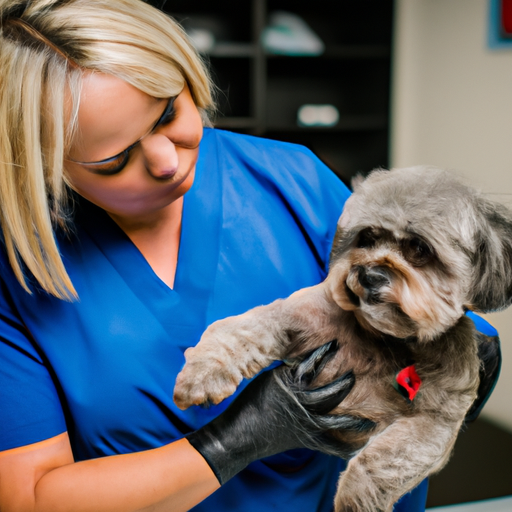As a caregiver, you know that taking care of your canine friend involves more than just feeding them and taking them for walks. Sometimes, it involves tasks that are a little less glamorous, such as emptying their anal glands! While it might not be the most pleasant task, it’s an important part of maintaining your dog’s health.
Why Do Dogs’ Anal Glands Need to Be Emptied?
Dogs have two small glands located on either side of their anus. These glands produce a foul-smelling liquid that dogs use to mark their territory. In the wild, these glands empty naturally when dogs defecate. However, in domesticated dogs, particularly smaller breeds or those with certain health issues, these glands can become impacted, causing discomfort and potential health problems.
Signs That Your Dog’s Anal Glands Need to Be Emptied
If your dog’s anal glands are full, they will likely show some or all of the following symptoms:
- Scooting their rear end along the ground
- Excessive licking or biting at their anus
- A foul smell coming from their rear end
- Difficulty sitting or appearing uncomfortable when sitting
- Swelling around the anus
How to Empty Your Dog’s Anal Glands
Before you begin, gather the following supplies:
- Latex gloves (or any disposable gloves)
- A soft cloth or paper towels
- Dog-safe disinfectant or mild soap
- Warm water
Follow these steps:
- Put on your gloves and position your dog so their rear end is accessible.
- Lift your dog’s tail gently to expose the anus.
- Locate the glands. They are situated at approximately 4 and 8 o’clock positions around the anus.
- Gently squeeze the glands. You should see a small amount of liquid being expelled. This liquid may be brown or yellow, and will have a strong odor.
- Clean the area thoroughly with a soft cloth, warm water, and dog-safe disinfectant or mild soap.
- Monitor your dog for any signs of discomfort or infection in the hours and days following the procedure.
When to Seek Professional Help
If you’re uncomfortable performing this procedure yourself, or if your dog shows signs of infection (such as redness, swelling, or pus), it’s time to seek professional help. Many groomers offer this service, and your vet can also perform the procedure.
Prevention and Maintenance
There are several things you can do to help prevent your dog’s anal glands from becoming impacted:
- Ensure your dog has a healthy diet. A diet high in fiber can help ensure your dog’s stools are firm, which can help the glands empty naturally.
- Regular exercise can also help keep your dog’s digestive system healthy and functioning properly.
- Regular check-ups with your vet can help catch any potential problems early.
FAQ
Q: How often should I empty my dog’s anal glands?
A: The frequency depends on your dog. Some dogs may never need their glands emptied, while others may need it done monthly. Your vet can give you a good idea of what’s normal for your dog.
Q: Can I harm my dog by emptying their anal glands incorrectly?
A: Yes, if done incorrectly, it can cause pain and even lead to infection. If you’re not comfortable, it’s best to leave it to a professional.
Q: What causes anal gland problems in dogs?
A: Several factors can contribute to anal gland problems in dogs, including obesity, allergies, and a diet low in fiber.
Q: I followed all the steps but nothing came out. What do I do?
A: Your dog’s anal glands may not be full. If your dog continues to show signs of discomfort, seek professional help.
Remember, as a caregiver, your dog’s health and comfort is your top priority. While emptying your dog’s anal glands may not be the most pleasant task, it’s an essential part of pet care for some dogs. And now, with this guide, you’re well equipped to handle it!



